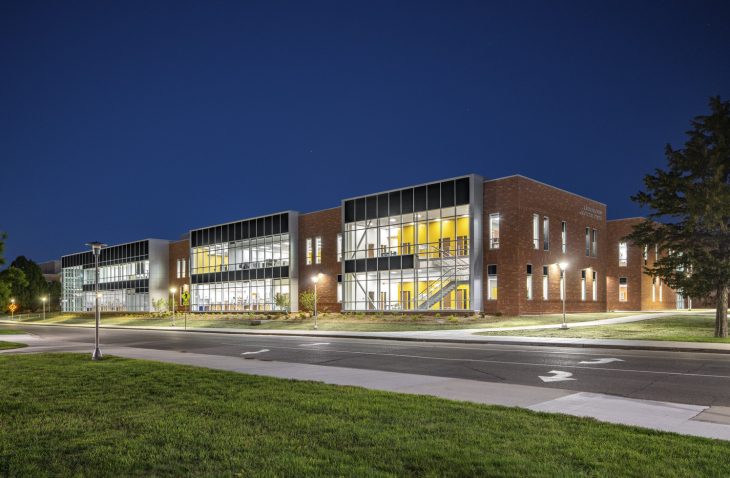Raven Precision Agriculture Center

South Dakota State University is staying at the forefront of the future of agriculture by bringing together the fields of agronomy, engineering, food & environmental sciences, and computer science into a single new facility located on the university’s main campus in Brookings. This modern facility, the Raven Precision Agriculture Center, is leading the nation in teaching, research, and outreach in all areas impacted by the benefits of precision agriculture. Students who are trained in this state-of-the-art facility will provide a workforce that will be uniquely qualified and ready to provide value within the agriculture industry.
The two-story Raven Precision Agriculture Center provides a common location for existing programs, faculty, and staff associated with Agricultural Engineering, Biosystems Engineering, and the Plant Sciences, as well as the new collaborative major of Precision Agriculture. The new major offers courses in data analytics, GPS-GIS technology, soil sciences, precision crop production, plant pathology, precision data mapping, sensor technology, precision farm machinery, electrical diagnosis, and weed/pest management. To support these needs, the building was uniquely designed to house 120,000-sf of research and teaching wet lab spaces, classroom and office spaces, a greenhouse and headhouse, conference rooms, breakout areas, support spaces, and more.
IMEG was selected as a sub-consultant to provide civil and structural engineering services on the new facility. Engineers worked closely with the architect during the design phases to establish structural systems for the building and coordinate column placement to avoid having exposed steel throughout the building. Long spans were used in large classrooms, conference rooms, and lab spaces to avoid using columns. A 40-foot clerestory runs through the center of the building and a 33-foot-high gallery area with open stairs and cantilever steel beams gives the illusion of a floating staircase and unsupported balcony. Steel moment framing was used to avoid cross bracing in front of the class curtain walls.
The other classrooms, offices, and common spaces utilized steel columns, composite steel floor beams, and composite steel floor deck. Pre-cast concrete wall panels were used for the high bay areas. The roof structure utilized steel roof deck and steel bar joists. A concrete foundation wall supported by concrete strip footing was chosen as the foundation system, and a lateral system utilized a combination of braced frames, moment frames, and pre-cast wall panel to support the structure.
Engineers also collaborated with the architect and owner to resolve vibration concerns related to lab equipment and a highly sensitive microscope. The design included an isolated structural slab to support the microscope.
Civil engineering design included site design of the building placement on the site, grading, parking lot layout, striping, and signage, sidewalk layout with ADA accessible routes, storm water drainage and detention, sanitary sewer and water services, and excavations and engineered fill under the proposed building.







